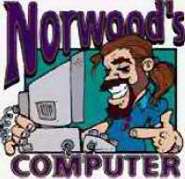November 01, 2004
Voting Q&A
Here’s a good list of FAQs from SP Times:
Q. Who can vote?Posted by Norwood at November 1, 2004 06:01 AMFloridians who registered to vote by Oct. 4. If they registered after Oct. 4, they will not be able to vote. If they didn't fill out a registration form correctly, they may not be able to vote. The Supervisor of Elections should have mailed all voters a precinct card. To verify status, call the election office.
Q. What do I need to bring with me to the polls?
Voters should bring identification showing photo and signature, if they have it. Acceptable photo IDs include driver's license, company badges, credit cards, a student ID, or a passport. Elections officials also accept utility bills, bank statements or paychecks to help verify identity. Voters without identification can sign an affidavit.
Q. Where do I go?
The location of a voter's polling site should be listed on voting cards that came in the mail. Those who don't have the card, should call their county elections office or go to its Web site. Voters can also look up polling sites at MyPollingPlace.com. It's vital that voters go to the right polling site. Otherwise, their votes will not count.
Q. What time can I vote?
Polls open at 7 a.m. and close at 7 p.m. Tuesday. Those standing in line at 7 p.m. will be allowed to vote.
Q. How long will it take?
Voting itself should take about five minutes. Lines could be long getting into the polls, though. To avoid crowds, don't go at peak hours in the morning, at lunch and after work.
Q. Who will be at the polls?
Outside, there will be election monitors, lawyers for the Bush and Kerry campaigns, campaign volunteers, international observers, reporters and possibly law enforcement officers. Inside, there will be election workers and poll watchers from both parties.
Q. Do I have to answer personal questions to get to the polls?
No. Election officials should not ask about debts, parking tickets or for a Social Security number. Campaign workers, monitors, lawyers and reporters may ask to speak to voters, who can talk if they want.
Q. What is a provisional ballot?
The Legislature created provisional ballots after the 2000 recount to provide a remedy for voters who might be mistakenly turned away from the polls by workers who thought they were ineligible. If a voter's eligibility cannot be determined at the precinct, he or she may fill out a provisional ballot, and the county canvassing board will determine if the ballot should count.
Q. What if I'm not on the voting rolls at my precinct?
If a voter isn't on the rolls, elections officials will find out if the voter is actually registered. They may direct the voter to a different precinct. If so, the voter must go to the right precinct. A provisional ballot cast in the wrong precinct will not count.
Q. What if I get challenged?
This year, poll watchers could challenge people's right to vote. If that happens, voters should remain calm. Voters will be asked to sign an oath attesting to their name, address, age, political party and eligibility to vote. Voters can present other evidence that they're entitled to vote, too. If poll workers still have doubt about a voter's eligibility, at the least, all voters will be allowed to cast a provisional ballot.
Q. How will I know if my provisional ballot was counted?
Voters can attend a meeting of the county canvassing boards Wednesday where provisional ballots will be reviewed. Voters also can bring additional evidence to argue that their vote should count. A decision must be made by noon Thursday. All voters will get a letter in the mail later saying whether their provisional ballot was accepted or rejected and why.
Q. What if I don't trust the touch screen voting machines?
If voters are casting their ballots Tuesday in a touch screen county (Pasco, Hillsborough or Pinellas), they need to use the machines. Don't ask for a provisional ballot. The canvassing board will throw out the ballot if a voter demands one simply because he or she doesn't trust the machines.
Q. What if I need assistance using the machines?
A voter can fill out a form at the polling site requesting help. They can get a family member or friend to assist. If a voter has no one to help, two poll workers will assist. There's also a demonstration machine available at each polling place.
Q. What's on the ballot?
Look for the sample ballot that came in the mail. Voters can also find a sample ballot on Web sites for the Supervisor of Elections, or in the Know Your Candidates special section of the St. Petersburg Times published Oct. 26. People also may hand out sample ballots at lines at the polls. It helps to read the ballot ahead of time.
Q. Do I have to vote in every race and for every amendment?
No. A voter can skip any race or amendment.
